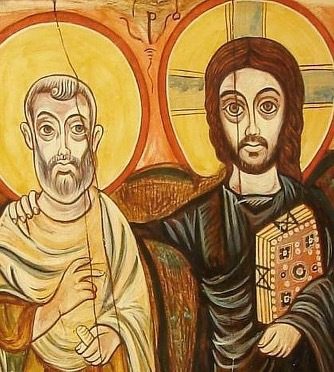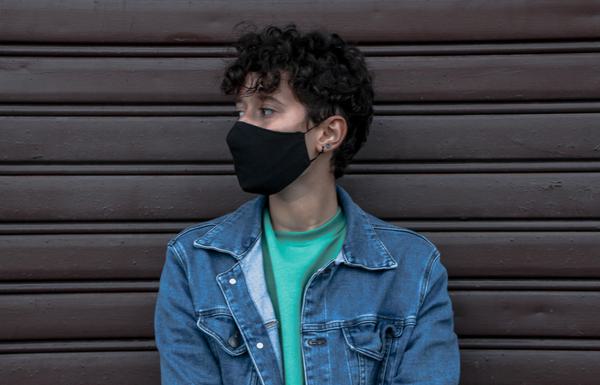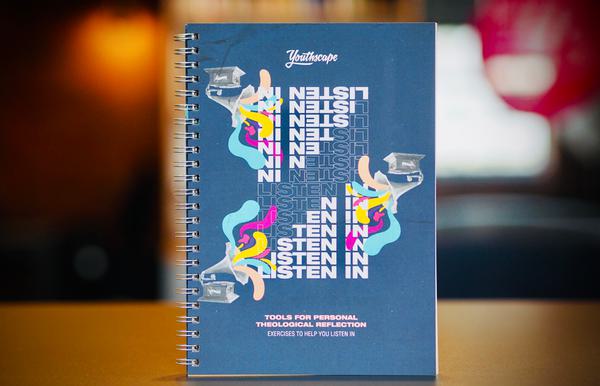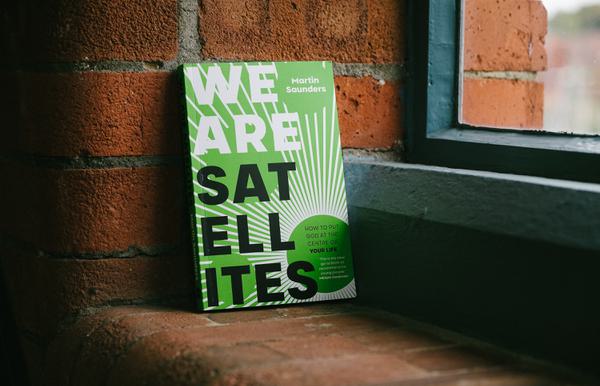Need fresh tools for prayer in your youth group? Here’s three ideas brought to you by With, a contemplative community committed to praying with and for young people.
At With, we meet three times every day to pray for children and young people, and we have the privilege of welcoming young people to join our rhythm of prayer here on their own retreat! We meet around the old Egyptian icon of Christ and His friend, the abbot, to remind us of God coming to be with us, through Jesus, as our friend. Christ's extended arm resembles how Jesus comes close to us without controlling us, and the similarity between the eyes of Jesus and His friend indicate that, through prayer and time with God, we can develop the eyes of Christ, extending the same grace and friendship God has offered us to others.

Ultimately, we believe that at its core prayer is a deep expression of these insights: knowing that Jesus calls us friends, knowing that we can freely chose to respond to God’s love for us, and being transformed by this love. So, how can we invite young people into this incredible friendship with God through prayer?
Here are three contemplative approaches to prayer that can help young people to notice the presence of God as a friend with them.
1. Beads and breath prayer
Be still and know that I am God – Psalm 46:10
It can be difficult to slow down and notice the offer of friendship God patiently extends to us. Distraction, anxiety and hurt can prevent us from noticing God’s presence. Breath prayers are repetitive and calming ways to open ourselves up to God.
At With, we have been making prayer beads to facilitate this: get hold of some wooden beads (less plastic!) and embroidery threads so that young people can make a bracelet. Then, encourage them to pass each bead through their hands, breathing in and out, repeating the same prayer each time, over and over again.
You may like to use the ancient Jesus Prayer –
Inhale – Jesus Christ,
Exhale – Son of the Living God,
Inhale – have mercy on me,
Exhale – a beloved sinner.
Or, here are some other examples of prayers you could use[1]:
Inhale – Be still and know.
Exhale – that I am God.
Inhale – I will not be afraid
Exhale – for You are with me.
Young people can take these beads, and these breath prayers, away with them to pray in their everyday life, something tangible, to be calmed and transformed by noticing God’s presence with them. They can use them to de-stress, focus and simply be with God.

2. Prayer walk
Your faithfulness endures to all generations; You established the earth, and it abides. – Psalm 119:90
Just as the abbot’s eyes become more like Christ’s through being with Jesus, we too can encourage young people to see the world as God sees it, and to notice God in the world around us.
Take your young people out for a walk, it doesn’t have to be scenic or exotic, and invite them to ask Jesus to walk with them. As you walk, talk little and notice what you can see. Listen to the sounds you can hear, spend time with them, and pray with them. This can help young people notice God, God’s time shown in the seasons, God’s care for creation. It helps us to identify places or people that we can pray for.
On our site at With Ditchingham, we have nature & woodland. We have scripture verses about each object young people can identify on their walk through our grounds, helping them to connect scripture with the world around them. For example,
Birdsong: Let everything that has breath praise the Lord. (Psalm 150:6)
Sing to the Lord a new song; sing to the Lord, all the earth. (Psalm 96:1)
or Fruit growing: But the fruit of the Spirit is love, joy, peace, forbearance, kindness, goodness, faithfulness, gentleness and self-control. (Galatians 5:22-23).
You could adapt this idea for your own local area and purpose, providing a resource for each young person. These walks will offer a time for young people to listen and reflect on how God communicates through creation and people that we encounter and offer an opportunity to listen and share experiences together.[2]
3. Lectio Divina
Lectio Divina is a time-honoured practice of scripture reading, using meditation, prayer and contemplation. Start with a Gospel reading, and dwell with Jesus together with your young people as you read and pray scripture in this way.
Lectio, Reading – Begin by reading aloud the scripture passage slowly, followed by some time for silent reflection.
Then, read the scripture aloud again, to ‘hear’ it again. Encourage young people to notice a word or a phrase which stands out for them. Again, allow for some time of silent reflection again –‘to be with, ponder or wonder’ about the word/ phrase that stood out.
Meditatio, Meditating – Invite everyone to share the word/ phrase that stood out and to listen to each other as they are doing so. This is about listening. After everyone has shared their word/phrase, talk with each other about anything you noticed. What is God saying to you through this Bible passage?
Oratio, Praying – On the third reading of the passage, begin to turn the parts which resonate with the group into prayers. Leave a time for the young people to pray aloud.
Contemplatio, Contemplating – Finally, after you have closed your prayers and a period of silence, ask the young people to share how they found the experience, what they will take away, and any deeper questions they may have. From this conversation, you may find yourselves inspired to together on particular actions prompted by the scripture.
We hope that these three ideas equip you to help your young people notice that they are with Jesus, their friend and saviour, through prayer. If you want to pray with us for children and young people you can download our prayer diary or send us a prayer request here.
Or, if you are interested in experiencing prayer at With, why not consider bringing a group of young people? We host retreats for young people who come with their leaders, working alongside them, creating space to be with God, with creation, and with each other. It is our prayer that young people might know Emmanuel, God with us, in every area of their lives.
REFERENCES:
[1] Sarah Bessey, A Rhythm of Prayer: A Collection of Meditations for Renewal (2021). P. 57
[2] Richard Carter, The City is my Monastery (2019), pp. 26ff. is great on 'seeking natural spaces for prayer'.











